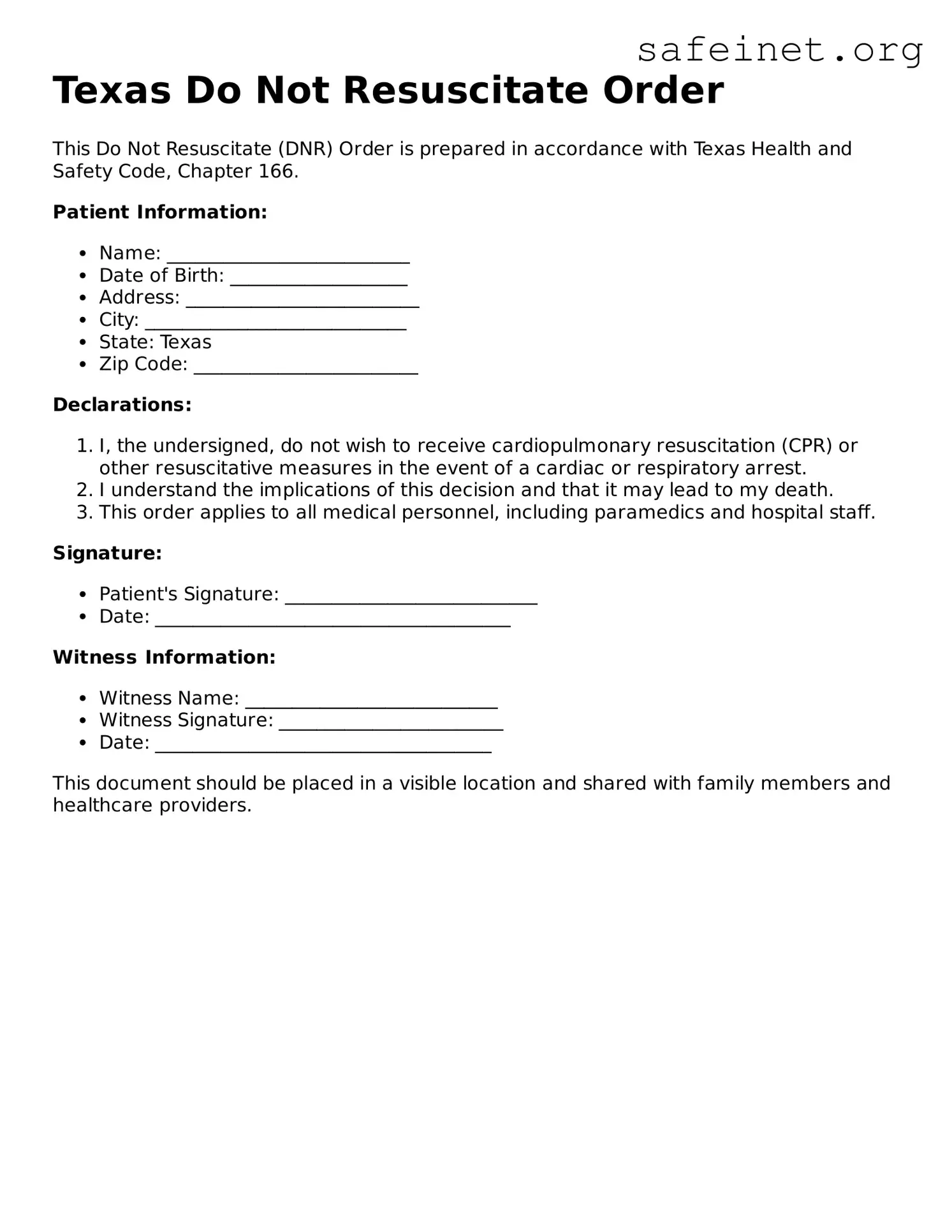What is a Texas Do Not Resuscitate Order (DNR) form?
A Texas Do Not Resuscitate Order is a legal document that allows an individual to express their wishes regarding cardiopulmonary resuscitation (CPR) in the event of a medical emergency where their heart has stopped beating or they have stopped breathing. By completing this form, a person can specify that they do not want CPR administered, thus allowing for a more peaceful end-of-life experience, consistent with their personal values and preferences.
Who can complete a DNR form in Texas?
In Texas, a DNR form can be completed by any adult who has the mental capacity to understand the implications of such a decision. This includes individuals diagnosed with a terminal illness, a severe chronic condition, or those facing the end stages of life. Additionally, a legal guardian or an authorized representative can sign the form on behalf of the individual if they are unable to do so themselves.
How do I obtain a Texas DNR form?
The Texas DNR form is available online through the Texas Health and Human Services website and can also be obtained from healthcare providers, hospitals, and various legal resources. It is important to ensure that you are using the most current version of the form, as legal requirements may change over time.
What information is required on the DNR form?
The DNR form requires basic information, including the patient’s name, date of birth, and a clear declaration of their wishes regarding resuscitation. The form must also be signed by the individual or their legal representative, as well as a physician who is aware of the patient’s condition and wishes. This physician's signature adds a layer of authenticity and ensures that the decision is informed by medical advice.
What are the legal implications of a DNR order in Texas?
The DNR order has significant legal weight. Once completed and signed, it must be respected by medical personnel in emergency situations. This means that if emergency responders arrive at the scene of a cardiac arrest, they are required to honor the DNR order and refrain from administering CPR. It is crucial for the form to be easily accessible, ideally kept in a location where it can be found quickly if needed, such as with medical records or on the refrigerator.
Can I change my mind after signing a DNR form?
Yes, individuals retain the right to change their minds about their DNR status at any time. If a person decides to revoke their DNR order, they should inform their healthcare provider and family members. It’s a good practice to formally complete a new DNR form that explicitly states the change, ensuring that all medical personnel are aware of the updated wishes.
How is a DNR order different from a living will?
A DNR order specifically addresses the issue of resuscitation in the event of cardiac arrest, while a living will covers a broader range of medical care decisions. A living will outlines a person's preferences for medical treatment in situations where they may be unable to communicate their wishes, such as in instances of terminal illness or severe incapacity. Both documents are important and serve to communicate an individual's health care preferences, but they focus on different aspects of medical treatment.
Is a Texas DNR form valid outside of Texas?
The validity of a Texas DNR order outside of Texas can vary. Other states may honor an out-of-state DNR; however, local laws and regulations can differ significantly. To avoid confusion or complications during emergencies, individuals traveling outside Texas should consult with a local attorney or healthcare provider in the area they plan to visit to ensure that their DNR wishes will be respected.
